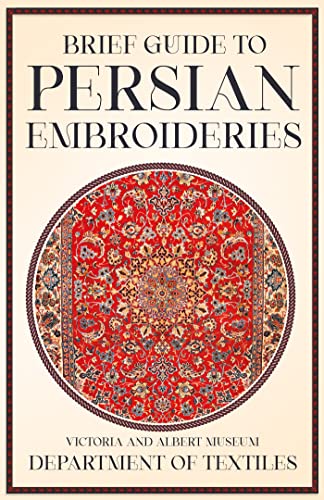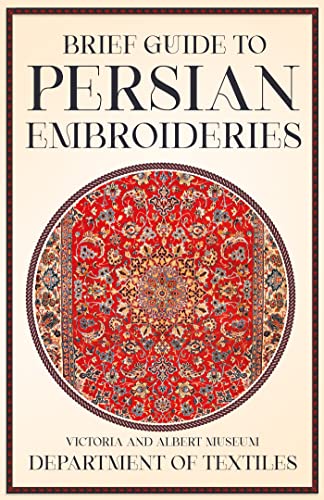Brief Guide to Persian Embroideries – Victoria and Albert Museum Department of Textiles is a comprehensive resource for anyone interested in Persian embroidery. The guide, provided by the esteemed Victoria and Albert Museum Department of Textiles, offers valuable insights into the history, techniques, and styles of Persian embroidery.
Covering a wide range of topics, the guide introduces readers to the rich cultural heritage of Persian embroidery, highlighting its intricate designs, vibrant colors, and meticulous craftsmanship. It explores the various motifs and patterns commonly found in Persian embroidery, as well as the materials and tools used in the process.
Additionally, the guide provides a glimpse into the social and cultural significance of Persian embroidery, shedding light on its role in traditional ceremonies, clothing, and home decor.
With its concise yet informative content, Brief Guide to Persian Embroideries – Victoria and Albert Museum Department of Textiles is an invaluable resource for both scholars and enthusiasts alike. Whether you are a seasoned collector or simply curious about this exquisite art form, this guide will undoubtedly enhance your understanding and appreciation of Persian embroidery.
Brief Guide to Persian Embroideries – Victoria and Albert Museum Department of Textiles
Persian embroidery is an ancient and intricate art form that has been practiced for centuries in Iran. The Victoria and Albert Museum Department of Textiles houses an impressive collection of Persian embroideries, showcasing the rich history and exquisite craftsmanship of this traditional craft.
History of Persian Embroideries
Persian embroidery has a long and storied history, dating back to ancient Persia. The art of embroidery was highly valued in Persian culture, and it was often used to adorn clothing, textiles, and even architectural elements. Persian embroideries were not only decorative but also served as symbols of wealth, status, and cultural identity.
During the Islamic period, Persian embroidery techniques and designs were influenced by various artistic traditions, including Persian miniature painting and calligraphy. This fusion of styles and techniques resulted in the development of unique and intricate embroidery patterns, characterized by delicate motifs, vibrant colors, and meticulous stitching.
The Collection at Victoria and Albert Museum
The Victoria and Albert Museum Department of Textiles boasts an exceptional collection of Persian embroideries, showcasing the diversity and beauty of this ancient craft. The collection features a wide range of embroidered textiles, including garments, wall hangings, and accessories.
Visitors to the museum can admire the fine details and craftsmanship of these embroideries up close, marveling at the intricate patterns and vibrant colors. The collection includes pieces from various periods of Persian history, offering a comprehensive overview of the evolution of Persian embroidery styles and techniques over time.
From the opulence of the Safavid dynasty to the elegance of Qajar-era textiles, the collection at Victoria and Albert Museum provides a fascinating glimpse into the rich cultural heritage of Persian embroidery. Whether you are an embroidery enthusiast or simply interested in Persian culture, a visit to the museum’s Department of Textiles is a must.
A Brief Guide to Persian Embroideries – V&A Department of Textiles
ASIN: B00AFDI10I
Publisher: Davidson Press (April 16, 2013)
Publication date: April 16, 2013
Language: English
File size: 5180 KB
Text-to-Speech: Enabled
Screen Reader: Supported
Enhanced typesetting: Enabled
X-Ray: Not Enabled
Word Wise: Not Enabled
Sticky notes: On Kindle Scribe
Print length: 49 pages



